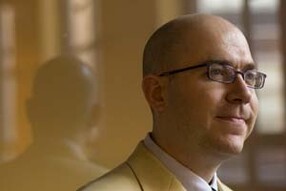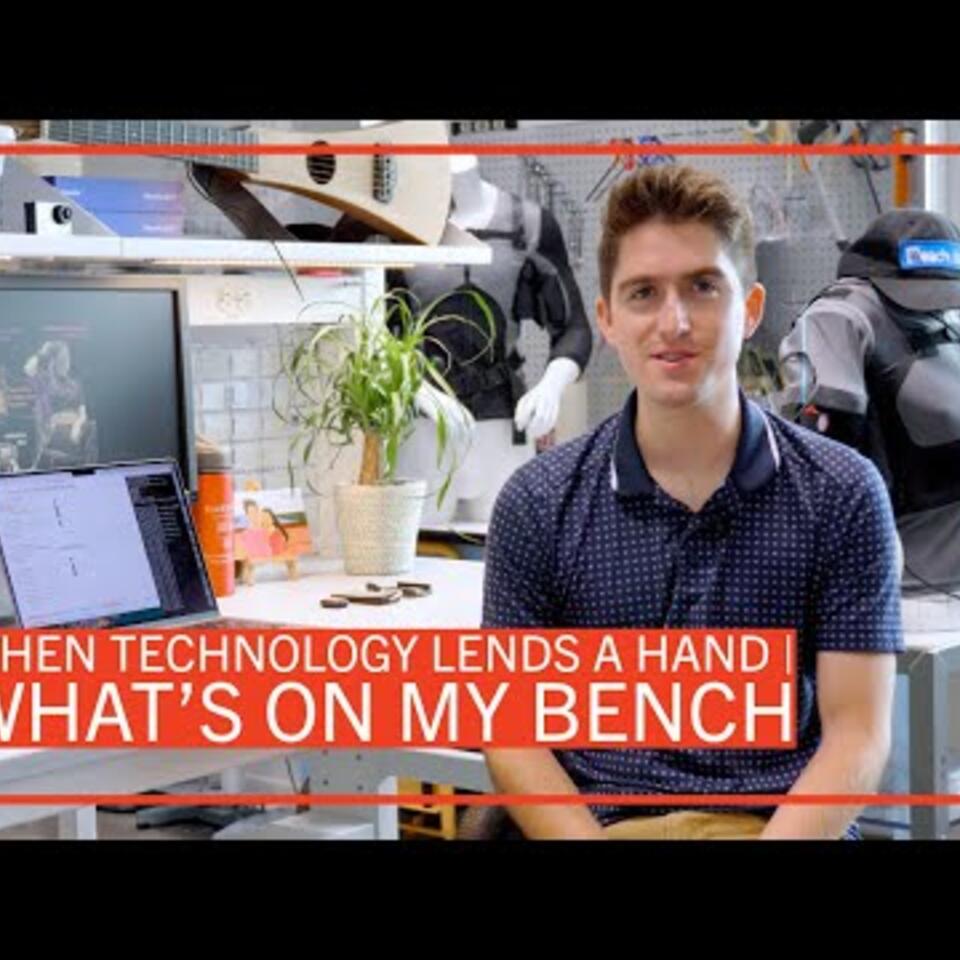Storing Energy From the Sun
How Harvard researchers will change the world
Imagine the Earth from space, at night. Orange glows illuminate our world’s most populous cities: Tokyo, Moscow, New York. Light equals technology. Technology equals prosperity. But what of the areas of darkness that span thousands of miles in sub-Saharan Africa?

“There is a huge correlation between wealth and energy production,” says Alán Aspuru-Guzik, a professor in Harvard’s Department of Chemistry and Chemical Biology. “If you have energy you have wealth. The energy we have access to in America is equivalent to having 30 servants helping us in our daily lives.” Nearly a billion people live in sub-Saharan Africa without access to the energy that enables other societies to thrive. It’s a severe disparity that prevents countries in the developing world from reaching higher standards of living.
But it’s a disparity that Aspuru-Guzik, a theoretical chemist with interests in quantum computing, is determined to address. Growing up in a middle-class family in Mexico, he had friends who were very rich and very poor and saw firsthand the effects of an unequal society. Mexico has tremendous solar and wind power potential, and Aspuru-Guzik understands that solving disparity in his own country—and throughout the world—will depend upon tapping these alternate energy sources. “Energy production has to be renewable, there is no way around it,” he says. “When I came to Harvard, I decided to dedicate half my time to energy, because it is the socially responsible thing to do. I have this amazing command of resources, and I’m surrounded by the smartest people on the planet, so let’s do something useful for it.”
One of the problems with renewable energy is storage. Wind turbines and solar panels can generate electricity, however, the energy produced naturally ebbs and flows, meaning that in times of peak energy usage, renewables cannot be relied upon to deliver the electricity needed. While efficient methods of clean energy storage remain elusive, Aspuru-Guzik is working with Michael Aziz, the Gene and Tracy Sykes Professor of Materials and Energy Technologies at Harvard’s School of Engineering and Applied Sciences, and Roy Gordon, the Thomas Dudley Cabot Professor of Chemistry and Professor of Materials Science, on a project to update an old technology: flow batteries.
Invented in the late 1800s and revived several times during the 20th century, flow batteries work by streaming an electrolyte solution that contains dissolved metals through a membrane into another electrolyte solution. As the molecules pass through the membrane, the liquids exchange ions and create an electric current. Though effective, the process is costly and utilizes corrosive liquids that can cause environmental damage if spilled.
Rather than using expensive metals, the modern flow battery consists of a tank filled with organic molecules—a modified version of a naturally-occurring quinone. These molecules are pumped toward an electrode, where they receive two electrons and two protons. When all the molecules in the tank have been through the process, the battery is fully charged. The energy stored can subsequently be accessed by running the battery in reverse, enabling the molecules to discharge the two electrons. “I worked on the theoretical calculations related to adapting quinone molecules and Mike, Roy, and their teams conducted the experiments that proved it could work,” says Aspuru-Guzik. “My vision is to make organic molecules for important applications, such as storing energy or for use in electronics.” In addition, he stresses the collaboration between theoreticians and experimentalists. “These types of projects can only be achieved by having theory and experiment working hand in hand.”
In theory, flow batteries could be used to capture solar energy by day and tapped at night by a household or even several homes connected through a mini grid. Aspuru-Guzik predicts that the first use of flow batteries will be a scaled-version that regulates the electricity grid, ensuring that the renewable energy produced can be stored for later use.
The Power of the Sun

Storage is one of the things Daniel Nocera, the Patterson Rockwood Professor of Energy, thinks about the most. “You can’t go very far with renewables unless you can store the energy,” he says. “Developing effective and inexpensive storage technologies would be a game changer for renewable energy.”
In addressing the storage problem, Nocera delves deeply into one of the most successful energy generation and storage processes on the planet: photosynthesis. During this chemical reaction, plants convert sunlight into a fuel that feeds them, essentially storing solar energy as sugar. Nocera has spent a great deal of his career researching photosynthesis in an effort to replicate this conversion process. “I wanted to understand that reaction in plants, how plants work,” he explains. “Overlaid on that interest was the global energy problem, which gave me an imperative to do this kind of science.” His work has resulted in the development of an artificial leaf that mimics the process.
In simple terms, the artificial leaf is a sandwich with catalysts as the bread surrounding a silicon strip. Placing the leaf in a glass of water and exposing it to the sun causes a reaction that breaks water (H20) into the gases hydrogen and oxygen, a process that is both carbon neutral and nonpolluting. When the hydrogen and oxygen are recombined in a fuel cell, the reaction generates electricity, with water as a byproduct. “All you are really doing is taking sunlight in and giving energy off, but in a useful form, rather than by generating heat,” Nocera explains. “What I do is energy conversion, simply transforming sunlight into another useful form of energy.”
Technology like the artificial leaf could revolutionize how energy is used throughout the globe. In the developed world, societies depend on the energy grid, a centralized pool of electricity that homes and businesses tap into. This grid is the result of trillions of dollars of infrastructure investment over a hundred years, and even though it has become antiquated, there’s no immediate need to move to a more distributed system. But the developing world lacks the technology and the means to create one from scratch. “The artificial leaf moves energy production from a centralized to a distributed model,” says Nocera. “The sun is everywhere and that means that with the right tools, people in the developing world could become early adopters of the technology.”
Because it generates hydrogen fuel, the artificial leaf can also effect change in the developed world. Fuel is the best way to contain energy in a small package. That’s why, for example, we put gasoline in our cars; switching to another, basically renewable, fuel would be fairly seamless in light of the already developed fuel cell car technology. And using renewable resources like sunlight to generate fuel would benefit both the developed and developing worlds, while addressing the disparities between them. “When you start giving poor people energy, whether it’s through fuels or flow battery technology, that economically empowers them,” says Nocera. “Once people in the developed world see the transformation in the developing world, they’ll want to live like that. People ultimately want to be in control of their own energy and that will force a change.”
It doesn’t hurt that both the artificial leaf and flow batteries have minimal environmental impact when compared with fossil fuels. Now that CO2 levels have reached 400 parts per million and the world’s population is expected reach 11 billion by 2050, the planet is in urgent need of solutions like those being developed at Harvard.
Creative Solutions
Should access to energy—and the ability to utilize it on a level playing field—be an inalienable, human right? If so, how can access to it be gained without adding to the already untenable problem presented by global warming? The answers may lie within academia and at Harvard in particular. In April, President Drew Faust announced the creation of the Climate Change Solutions Fund, a commitment to supporting energy and environmental research to address two great challenges: changing our society’s energy system and infrastructure while spurring the transition to clean, affordable, and renewable energy sources. President Faust observed that since universities have provided much of the research demonstrating the existence of climate change, many of the solutions will also come through scientific investigation. “Already we support research at the vanguard of energy and climate science,” she said. “Our research across Harvard—in climate science, engineering, law, public health, policy, design, and business—has unparalleled capacity to accelerate the progression from nonrenewable sources of energy.”
Solving the environmental and disparity problems presented by energy and climate change will require creative thinking, like the kind that inspired Leonardo da Vinci. “The modern scientist of the 21st century should be like Leonardo,” says Aspuru-Guzik. “We were Leonardos in the 15th century, and then we stopped and began hyperspecializing. I say that the multidisciplinary opportunities are there like never before. We have to transgress the boundaries of our fields and even of the university, because how else can we help society?”
Photos by Stephanie Mitchell Nocera, Rose Lincoln
Get the Latest Updates
Join Our Newsletter
Subscribe to Colloquy Podcast
Simplecast




